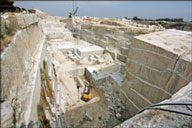
There are no two pieces of natural stone that are exactly the same and that’s what makes it so desirable and why sealing marble and granite is not “one size fits all”. Natural stone is beautiful, timeless and unique in its properties regardless of where we have it installed. Whether in our home as a kitchen countertop, a bathroom vanity, floor or shower wall, if it’s a natural stone, there’s a chance your stone may need sealing if it is porous.
With that said, the permeable qualities or level of absorbency of each stone slab will vary. You may have stone from a quarry in South America that doesn’t absorb much of anything or you could have a piece of natural stone quarried in China that absorbs moisture like a sponge.
Your granite or marble may or may not already be sealed by the contractor who installed it. If asking the contractor is not an option, it’s important you know the condition of your stone so you can create a maintenance regimen to make this natural beauty last.
Absorbency Test for Sealing Marble and Granite
If your natural stone installation contractor or sales rep told you that your marble or granite needs to be sealed every 6 months to a year, it may be because they have sealer to sell. Before you buy any sealer, try the following steps to determine the level of absorbency for your stone. This will tell you whether or not your stone was sealed prior to installation or whether your stone needs to be sealed at all.
- Place about 2 tablespoons of water on your marble or granite countertop or floor.
- Let the water sit for 10 to 15 minutes
- After 10-15 minutes, wipe up the water with a soft cloth or paper towel

If the stone did not darken where the water sat, then the stone will not absorb a water-based sealer. Sealing then is not necessary because it was sealed prior to installation or you have a piece of marble or granite with low absorption. This will also tell you that you have a level of protection against water-based stains. If the water did leave a dark stain, then your slab is not likely sealed, is porous enough to absorb liquids and should be sealed.
Conduct the same test for solvent or petroleum-based product absorption.
- Dab some mineral oil on your marble or granite
- Let it sit for 10 to 15 minutes like you did with the water
- Wipe up the mineral oil with a soft cloth
If the mineral oil does not leave a dark stain, then solvent or petroleum-based products won’t either. If the mineral oil does leave a stain, then using a solvent-based sealer needs to be your choice for sealing marble and granite. NOTE: If the mineral oil does leave a dark stain, your marble or granite is not damaged. The mineral oil will evaporate and your stone will return to its natural color.
Bottom line, if your marble or granite did not change color with either the water or the mineral oil, it doesn’t need to be sealed.
When you need to seal, do this…
Buy a good product for sealing marble and granite that will stand up to both water-based and solvent-based invaders. Any decent sealer will at least 5 years even if you have the most porous marble or granite slabs or tile. Do it when it’s needed based on self-testing and not based on the opinion of someone who may have something to sell. Try to use products that don’t require frequent repeat applications. I am in no way affilated with DuPont but they do provide a product with an 8-year commercial or 15-year residential warranty. Check them out for yourself HERE.
The better the product when sealing marble and granite or any other natural stone, the less time you spend on maintenance and the more time you have for doing something you enjoy.
CHECK OUT THIS GREAT MARBLE CARE HANDBOOK
Interesting Facts About Marble and Granite
Here are some interesting facts about marble and granite you may not have known.
Tagged with: construction help • how to seal granite • how to seal marble • marble and granite • sealing granite countertops • sealing marble and granite
Filed under: Build Help





